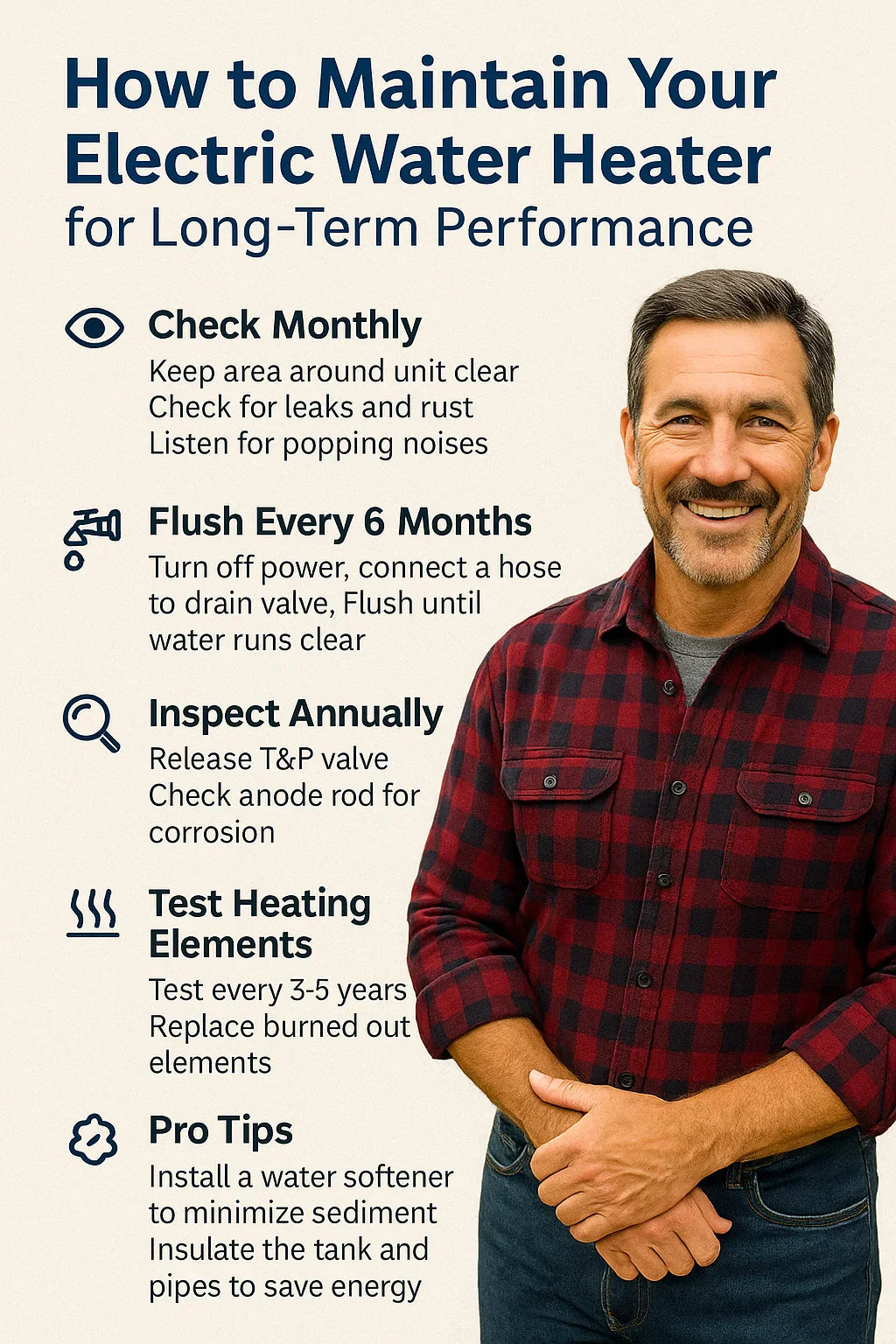Electric water heaters are a reliable and energy-efficient option for many homeowners, but like any major appliance, they require regular maintenance to run efficiently and last as long as possible. Without proper care, sediment buildup, corrosion, and wear on components can reduce your heater’s performance and lifespan.
In this comprehensive guide, we’ll cover everything you need to know about maintaining your electric water heater—from routine flushes to part inspections—so you can enjoy consistent hot water and avoid costly breakdowns.
Why Maintenance Matters
Even the best electric water heaters—whether 50- or 60-gallon units—aren’t immune to wear and tear. Over time, minerals from hard water settle at the bottom of the tank, reducing heating efficiency and leading to early component failure.
Benefits of regular maintenance include:
-
Extended system lifespan (often 10–15 years or more)
-
Higher energy efficiency
-
More consistent water temperature
-
Reduced risk of leaks and costly emergency repairs
-
Qualification for extended warranties or rebates
Key Maintenance Tasks for Long-Term Performance
Here’s what homeowners should be doing on a monthly, seasonal, and annual basis.
1. Monthly: Check the Area Around the Unit
-
Look for leaks at pipe connections and under the tank.
-
Listen for strange noises like popping or sizzling, which could indicate sediment buildup.
-
Clear the space around the heater to maintain airflow and reduce fire risk.
2. Every 6 Months: Flush the Tank
Sediment buildup can insulate the bottom of the tank from the heating element, making it work harder.
To flush your tank:
-
Turn off power at the breaker.
-
Connect a garden hose to the drain valve.
-
Open the valve and let water run until it’s clear.
-
Close valve, disconnect hose, and turn the power back on.
Tip: For very hard water, you may want to flush every 3 months.
3. Annually: Inspect the Anode Rod
The anode rod is a critical part that attracts corrosive minerals before they reach the tank walls.
-
Turn off power and water before inspecting.
-
Remove the anode rod using a socket wrench.
-
Replace it if more than 6 inches of core wire is exposed or the rod is coated with calcium.
Pro Tip: Replacing the anode rod every 3–5 years can double your tank’s life.
4. Annually: Test the T&P Relief Valve
This valve is a crucial safety component that opens if pressure or temperature gets too high.
To test it:
-
Lift the valve lever briefly and let water release into a bucket.
-
If no water comes out or it drips afterward, replace the valve.
5. Every 3–5 Years: Inspect Heating Elements
Over time, lower and upper heating elements can burn out due to sediment or corrosion.
Signs you may need to replace them:
-
Water isn’t hot enough
-
Only cold or lukewarm water is available
-
Energy bills are rising despite normal usage
Use a multimeter to test for continuity, or contact a licensed plumber for professional inspection.
Extra Tips for Long-Term Water Heater Health
-
Install a water softener if you live in an area with hard water.
-
Add insulation to pipes and the tank (unless it’s already factory-insulated).
-
Set the thermostat to 120°F to prevent scalding and reduce wear.
-
Install a leak detector with automatic shutoff to protect from flooding.
Signs It’s Time to Call a Pro
While most maintenance can be DIY, there are times when it’s best to call a professional:
-
Rusty water or strange odors
-
Water heater is over 10 years old and performance is declining
-
Persistent leaks despite maintenance
-
Fluctuating water temperatures
Tools and Accessories You’ll Need
| Tool/Part | Use |
|---|---|
| Garden hose | Tank flushing |
| Socket wrench | Removing anode rod |
| Multimeter | Testing heating elements |
| Teflon tape | Resealing connections |
| New anode rod | Replacing old or corroded rods |
| Bucket | Testing T&P valve |
Conclusion: A Little Maintenance Goes a Long Way
Your 50–60 gallon electric water heater can deliver reliable hot water for over a decade with proper care. By following a regular maintenance schedule and catching issues early, you’ll ensure optimal performance, lower energy bills, and peace of mind.
In the next topic we will know more about: Is a 50-Gallon or 60-Gallon Water Heater Right for Your Home?







